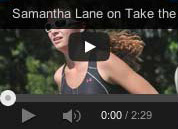 Dr. Don Peacock By Dr. Don Peacock If you are prone to blisters, having a small stash of prevention and treatment products is a good idea. Keep in your backpack, bike bag or even back pocket, a small selection of blister aids such as: - Duct tape - Petroleum jelly - Band-aids - Powder - Dry socks With these, you will be able to act quickly to any warning signs that a blister is developing.
To prevent blisters, you have to minimize friction on the skin. You can greatly reduce the likelihood of a blister by wearing foot gear that fits properly, and moisture wicking socks. Some socks made from synthetic blends help to reduce friction and moisture on the skin of the feet. Also, wearing two thin layers of socks will help reduce blistering. Taping blister-prone toes or heels prior to your event can help. While Band-aids and other tapes offer some relief, many athletes often use small strips of duct tape on these trouble spots. Duct tape stays in place for long periods of time and the shiny back is slick enough to slide on socks. Another option is to apply petroleum jelly or talcum power before exercise to reduce friction. One warning sign that a blister is about to develop is redness and warmth on the skin called a “hot spot.” If you have any “hot spots” during activity, it’s important to apply something right away to prevent the blister from developing. Try to keep your feet dry, or change socks if possible. If you can’t stop activity or change shoes or socks, your best option is to apply duct tape or petroleum jelly to the sensitive area. If you do get a blister, keep it from getting bigger, and avoid infection. Signs of infection include pus draining from the blister, very red or warm skin around the blister, and red streaks leading away from the blister. Small unbroken blisters that don’t cause discomfort should be left alone to heal. However, large, painful blisters can be drained as long as you keep the top layer of skin intact and covering the blister. The best protection against infection is a blister’s own skin. TREATMENT You should never drain a blister while engaged in ongoing activity. It is better to wait at least 24 hours after a blister forms to drain. A person with diabetes or poor circulation should never drain a blister. To safely drain a blister, first clean it and the surrounding area with rubbing alcohol or antibiotic soap and water. Next, sterilize a needle over a flame until the tip glows red, and allow it to cool. Finally, puncture a very small hole at the edge of the blister and drain the fluid by applying gentle pressure. Once drained, place antibiotic ointment on the blister and cover with a bandage, and let it heal naturally. If you are diabetic or have circulation problems, seek medical treatment for larger blisters. Join in the TTL training fun, and leave a comment!
0 Comments
Leave a Reply. |
Take the Lake would not be possible without our generous sponsors. Thank you for supporting fitness and good health in our community! Thank you to our sponsors! Event Sponsors Columbus Regional Healthcare System The John A. McNeill Family Liberty Healthcare T-Shirt Sponsors ATMC Carolina Sports Medicine Council Tool Company Friends of Rube McCrae Memorial Library Hill's Food Stores International Paper Joe’s Barbecue Lake Waccamaw Lion's Club Southeastern Community College Poster Sponsors BB&T Baldwin Woods Pharmacy Dale's Seafood Restaurant Powell and Powell Law Sam’s Pit Stop Special Service Sponsors Body Shapers Fitness Center Collier’s Jewelers Lake Time Vintiques The News Reporter Theme Time!Take a few minutes and reel through the years of Take the Lake, as we review the many themes and posters that have helped make fitness more fun in Columbus County! Click here
DID YOU KNOW...
that the second-most-popular Boy Scout merit badge in the U.S. is for Swimming? And the ninth-most-popular is Personal Fitness? Yes! Source: Scoutingmagazine.org
SPONSORS
Visit our Sponsor Page, or Contact us if you would like to be a part of the largest community fitness event in Columbus County! |

